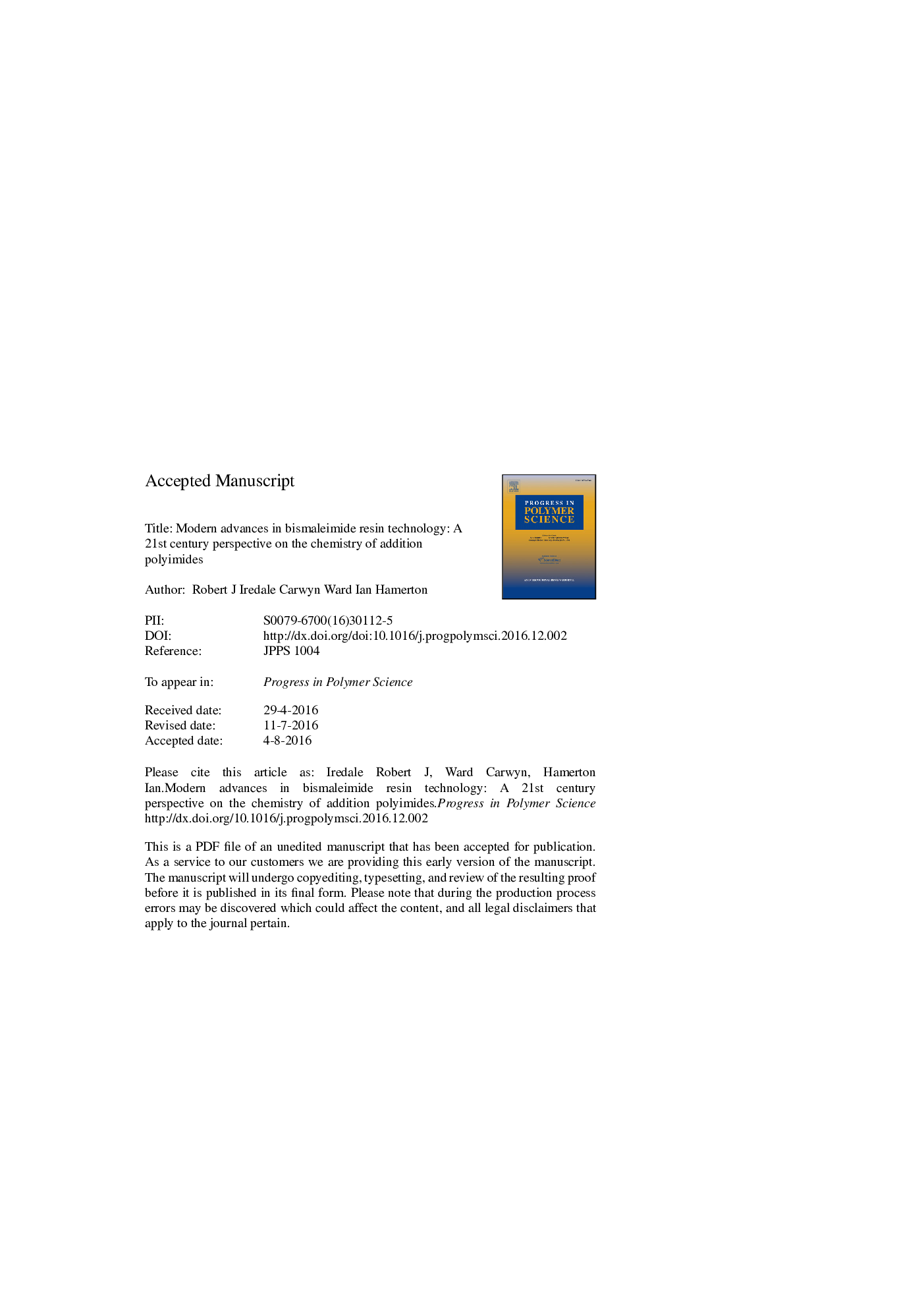| Article ID | Journal | Published Year | Pages | File Type |
|---|---|---|---|---|
| 5207899 | Progress in Polymer Science | 2017 | 82 Pages |
Abstract
The chemistry of bismaleimides (BMIs), their blends and copolymers is reviewed critically with particular emphasis placed on the development of the field after 1990, which was marked by several comprehensive review articles. A general introduction to the structure property relationships of BMIs is presented, outlining the development of the preparative chemistry, and the early strategies adopted to address the inherent brittleness of the cured 'first generation' BMI polymers. 'Second generation', diallylbisphenol-toughened BMIs, form the basis of the benchmark commercial systems, and the polymerization mechanism is discussed. The current review is placed in context, addressing the issues of cost, processing and precursor toxicity, the major barriers to wider acceptance of BMIs. The main body of the review evaluates a number of observations made by Dr Horst Stenzenberger in 1990, for the future development of BMI technology. Hence, the synthesis of novel bismaleimide building blocks, incorporation of new thermoplastics and additives, and blending with new thermosetting comonomers are all discussed in detail. The aforementioned review had been written before the concept of nanocomposites or smart polymers had been explored with BMIs, but the fields have since grown (especially in the case of the former topic) and are reviewed herein. The application of BMIs to continuous fibre composites is one of the proposed fields of commercial development. The topic falls a little beyond the scope of the present review of BMI chemistry, and is the subject of another publication, but a brief discussion of the most recent developments is presented. The review is concluded with some thoughts about the future outlook for BMI chemistry.
Keywords
Related Topics
Physical Sciences and Engineering
Chemistry
Organic Chemistry
Authors
Robert J. Iredale, Carwyn Ward, Ian Hamerton,
